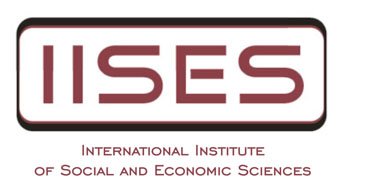International Conference on Economics, Finance & Business, London
ASSESSING THE EFFECTIVENESS OF BILATERAL AID ON FINANCIAL ACCESS, MICROFINANCE, AND ECONOMIC GROWTH IN BANGLADESH, RWANDA, AND MOZAMBIQUE
OLIVIA LU
Abstract:
Financial exclusion remains one of the most persistent barriers to economic development, constraining private-sector growth, limiting poverty reduction, and perpetuating economic disparities. Bilateral foreign aid has long been a tool for addressing financial sector deficiencies, yet its impact on financial inclusion remains debated. Can aid meaningfully expand access to credit, increase financial intermediation, and strengthen institutional governance? Or does it merely act as a temporary fiscal injection with limited structural impact? To assess how foreign aid influences financial sector development and financial inclusion, this study analyzes the cases of Bangladesh, Rwanda, and Mozambique from 2012-22, focusing on both formal and informal financial intermediaries. This paper analyzes macroeconomic data, financial sector indicators, aid disbursement trends, and governance metrics to empirically evaluate the relationship between aid and financial inclusion. Using sectoral disaggregation of aid flows and institutional effectiveness scores, the research traces the pathways through which aid channels into financial systems and whether it translates into higher private-sector credit, reduced borrowing constraints, improved banking efficiency, and sustainable microfinance growth. Aid flows are analyzed across three key subsectors: (1) Financial Policy and Administrative Management, (2) Formal Financial Intermediaries, and (3) Informal Financial Intermediaries, providing a granular assessment of how different forms of aid impact banking stability, microfinance participation, and credit accessibility across varying institutional environments. The impact of foreign aid on financial inclusion depends on how well funding aligns with governments’ priorities in existing policies. Bangladesh and Rwanda have seen stronger growth in microfinance, digital banking, and SME credit, while Mozambique has struggled due to weak institutions and economic instability. Policy aid has helped Rwanda strengthen financial regulations, but in Mozambique, even large inflows have failed to improve oversight. But aid to banks does not always increase lending. Bangladesh saw improved efficiency, but Rwanda and Mozambique still face high interest rate spreads, which could point to deeper financial inefficiencies. Finally, microfinance aid is most effective when paired with strong local policies. While Bangladesh and Rwanda sustain growth even as aid declines, Mozambique’s financial access stalls once donor support fades, showing that without strong institutions, financial inclusion remains fragile. Ultimately, this study contributes to the literature on international aid and development by identifying the conditions under which aid strengthens financial systems rather than acting as a temporary economic stimulus. To be truly effective, donor assistance must go beyond short-term interventions and support structural changes that allow financial sectors to grow independently.
Keywords: Foreign aid, Financial inclusion, Microfinance, Governance, Banking efficiency

